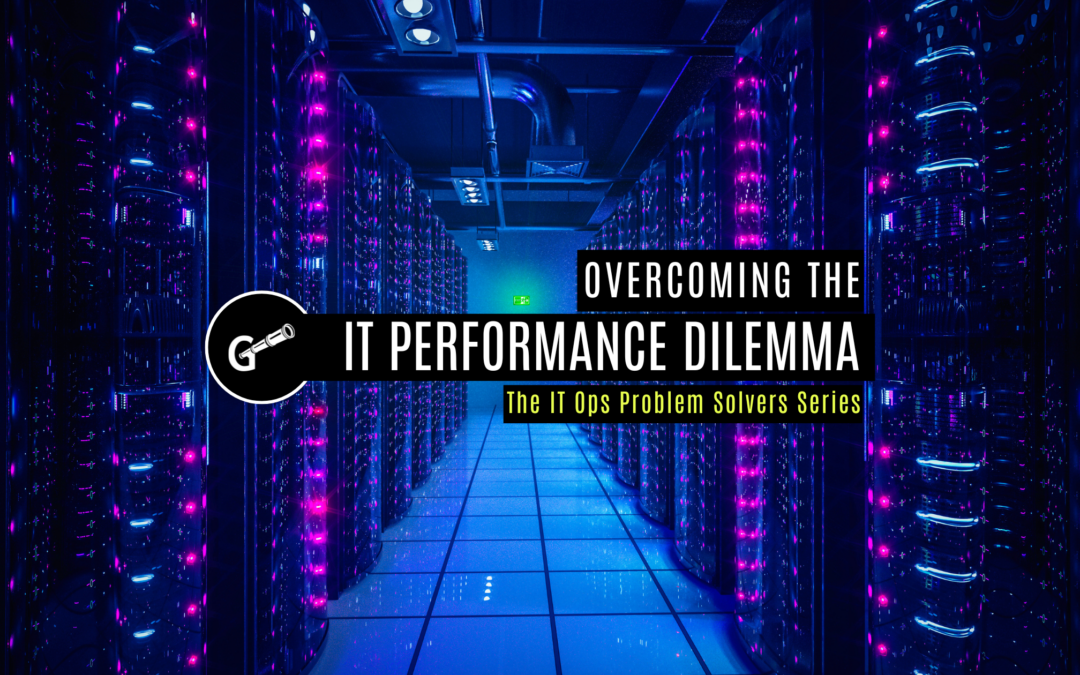FinOps is beginning to take the enterprise by storm, but many enterprise IT leaders may be taking too narrow a view and risk falling into a trap.
There’s a good reason for this upswing in FinOps attention: runaway cloud costs are becoming a significant challenge for enterprise IT leaders, particularly as they move legacy workloads to the cloud in earnest. But while FinOps is a great way to start tackling the cost dilemma, making it most effective may require you to simultaneously expand its scope and fight the dogma it is beginning to collect.
While the cloud has been a significant enterprise force for at least the last decade, most of the focus has been on so-called greenfield development — new applications that could take advantage of cloud-native architectures. Driven by the intensifying need for organizational agility and flexibility, enterprises have begun moving massive amounts of their legacy tech estate into the cloud — and are being hit by wave after wave of unexpected costs in the process.
Whether from a lack of rightsizing, shifting workload characteristics, or changes in business demand, runaway cloud costs are catching enterprise leaders by surprise — or at least without the tools to combat them — and spurring growing interest in the discipline of FinOps that promises a better, more data-driven approach to cost management.
Various sources say that 30-50% of enterprises currently have some form of a FinOps practice, and the FinOps Foundation says that there are clear indications that adoption is growing, particularly in larger enterprises.
But adopting this practice does entail risk, particularly if you allow it to become a dogmatic force like so many frameworks and approaches before it. More importantly, it’s essential to understand that cloud cost pressures, while of a different nature, are just the latest in a long history of challenges enterprise IT leaders have faced in managing IT costs and aligning them to value.
Therefore, to keep FinOps from becoming just another in a long line of expensive and soon-to-be-discarded “best practices,” you’ll need to think a bit bigger and a bit smaller.
FinOps: A New Coat of Paint on an Old Problem
“It costs how much? And it does what?”
I heard some version of these questions hundreds of times in my years running IT in the healthcare industry. And this was 20 years ago when the complexity and technicality of our tech stack were a mere fraction of today’s typical environment.
Despite some assertions that cost management in the cloud is a new challenge or that it was somehow easier to manage costs when they were amortized as part of a CapEx spend, my experience — and the experience of any enterprise IT leader who’s been in the job for more than a decade — proves otherwise.
Creating cost visibility, control levers, and the ability to ascribe costs to specific business outcomes has been a problem from the very beginning of the IT function — and we need to address FinOps in this broader context if it is to be truly transformative.
The key to creating a long-term solution to any problem is to get to its root. To this end, it’s important to understand that while cloud cost management introduces an additional layer of complexity, it is merely the latest manifestation of this longstanding challenge within enterprise IT.
Still, FinOps is growing in popularity for a reason. This additional layer of complexity, the highly variable nature of cloud costs, and the fact that the cloud has shifted many IT costs from CapEx to OpEx may have elevated the enterprise IT cost management issue sufficiently that we finally have an opportunity to address it — but only if we approach it correctly.
Addressing IT Cost Management with FinOps will demand that we do several things.
- First, we must acknowledge FinOps’s place in this larger picture, including already existing disciplines, such as IT Financial Management (ITFM) and Technology Business Management (TBM). In so doing, we must reframe FinOps as a broad discipline that infuses dynamic cost-performance management across the entire IT management lifecycle.
- Second, we need to root FinOps to its business objectives and avoid it becoming a dogmatic practice that takes on a life of its own.
Going Bigger: Looking at FinOps Beyond the Cloud
According to The FinOps Foundation, FinOps operates against a set of core principles. They include:
- Teams need to collaborate
- Decisions are driven by business value
- Everyone takes ownership of their usage
- FinOps data should be accessible and timely
- A centralized team drives FinOps
Before we go any further, I have a confession to make.
I made a minor tweak to the original version of these principles: I eliminated their use of the word “cloud” (and removed the last principle, which talks about taking advantage of the variable cost model of the cloud).
But I’d like you to contemplate these principles as I’ve written them. When I take out the term cloud, do they not apply to the totality of the IT spend challenge? As an IT leader trying to tackle the challenge of IT spending, don’t these principles still ring true in any environmental setting?
Of course, they do.
That’s because the fundamental principles guiding FinOps are good practices that encourage cooperation, communication, ownership, and a focus on the value technology drives for the organization — principles that genuinely apply across the entire IT mandate.
While the last principle dealing with variable cost is somewhat (although not entirely) unique to the cloud, everything else represents a solid approach to tackling cost management in enterprise IT.

The big difference between FinOps and the enterprise’s traditional approaches to addressing the IT cost management challenge is actually the fourth point: access to timely data.
It has largely been the inability to collect and analyze cost data — in the context of performance — that has been the true source of the cost management challenge. The complicated nature of CapEx spending and the financial gymnastics required to translate these massive investments into incremental usage costs were often not worth the effort.
The variable cost nature of the cloud — and the more readily available data that comes with it — changed this paradigm. But along the way, various IT infrastructure observability, management, and intelligence tools have matured, making this sort of data much more attainable even for the legacy estate.
So, where does this leave us?
I believe that the growing popularity of FinOps (not to mention the more rigorous development of the practice thanks to organizations such as The FinOps Foundation) is creating an opportunity for you to level up your entire approach to IT financial and cost management by embracing FinOps as a foundational discipline that you apply to your entire technology estate.
While you won’t have the same level of variable control or as easy cost delineation, by applying it holistically (and possibly in collaboration with ITFM or TBM practices), you will ensure that FinOps doesn’t become a narrowly applied fad that fails to deliver meaningful value over the long run.
Going Smaller: Fighting Dogma to Deliver Practical Results
You can’t see them on the outside, but I have the scars to prove my battle bonafide. I have fought in several of the IT Framework Wars over the years and have not only those scars but also the wisdom I earned as a result.
My big epiphany: nobody wins in a framework war.
While I have a great appreciation for what The FinOps Foundation is doing, I also see some red flags. The first is the last principle in my list above: FinOps should be run by a centralized team.
If you read the details, you’ll see that this team is supposed to set standards, establish practices, evangelize and promote the discipline, establish executive buy-in, and so on. Executional responsibility should reside with operational teams (see principle #3). That’s all right-minded.
The challenge is that it risks becoming dogmatic when a practice like this becomes a function and a career. I saw this fact essentially kill the IT Service Management (ITSM) movement (whose dogma was driven by ITIL), and we’re seeing it play out in real time within the DevOps movement. Talk privately to an IT Ops executive, and you’ll hear them lament that all those centralized DevOps teams seem to have forgotten the Ops bit.
While all the things the centralized team is supposed to be responsible for are essential, its mere existence will ultimately threaten its long-term effectiveness if you let it. And that dogmatic death may very well begin with what I’m addressing in this analysis.
While I’m encouraged by the collaboration between The FinOps Foundation and The TBM Council via the working group to integrate FinOps into a wider approach, I anticipate the dogmatic arguments from some FinOps proponents who insist that its application should be limited to the cloud and not extended more broadly within organizations.
I can imagine the lengthy debates over the arcana and rationale for this point or that one. And it will all amount to nothing but the death of a practice that should be the essential tool you’ve been missing in your never-ending quest to balance the cost and performance of your tech estate.
As an enterprise IT leader, standing against such dogmatic tendencies is crucial. Embrace FinOps as a transformative force and apply it holistically, ensuring it doesn’t become an unwieldy endeavor that crumbles under its own weight.
An Integrated Approach to Find the FinOps Promised Land
The good news is that we are entering the golden, data-infused era of IT operations. The cobbler’s children will finally get some shoes.
Recent advancements in what I’m calling IT Observability and Intelligence Platforms are radically changing the game for enterprise IT leaders because you can now get access to crazy amounts of data that allow you to truly see into the depths of your infrastructure estate, understand the deep relationships that intertwine it, and get visibility to how its performant and costs characteristics play off one another.
It’s something that you didn’t have access to only a few short years ago.
If you embrace it, it will usher in a bright new world in which you can dynamically look at cost and performance simultaneously, assess tactical and strategic implications dynamically, and democratize the cost-aware management of your tech stack. And, if you step back and broaden your perspective, you can do this across your entire technology estate.
That’s the true promise of FinOps, and it’s why I’m so excited about this future.
Ready to Take the Next Step?
When it comes to managing IT infrastructure, the stakes have never been higher. Virtually every part of the tech stack — whether legacy on-prem, in a private cloud, or in the public cloud — has direct business- and customer-facing exposure. And, with workloads constantly shifting, multiple environments in production simultaneously, new technologies being introduced on a regular basis, and costs incredibly difficult to manage, IT organizations need a new, data-centric way to manage their infrastructure stack.
We know firsthand how traditional monitoring tools fall short. Like you, we manage complex systems. And we’ve felt the pain of configuring a slew of overly complicated tools that failed to give us what we needed.
That’s why we built Galileo. Unlike traditional monitoring architectures, Galileo leverages contextual data to expose your operational reality. By combining raw historical data with a purpose-built analytics engine and intuitive 3D navigation (uniquely built on a state-of-the-art gaming engine), Galileo delivers the visibility and insights IT teams need to:
- Cut costs by optimizing cloud and on-prem workloads.
- Answer critical infrastructure questions, including “What do I have?” “What’s connected to what?” and most importantly, “Am I healthy?” to manage infrastructure health, connectivity, and capacity efficiently.
- Optimize the stack to increase resiliency and reliability, improve governance, and reduce risk, all without exhausting your internal resources.
Set up a Galileo demo and change how you see your infrastructure and analyze its health – FOREVER!

See more. Know more. DO more … with Galileo. Let’s get started today.
About the Author

Charles Araujo is a technology analyst and internationally recognized authority on Digital Transformation, the Digital Enterprise, and the Digital Experience. Researching Digital Transformation for over 10 years, he is now focused on helping enterprise IT leaders transform their organizations. Publisher and principal analyst of The DX Report, founder of The DX Institute, and author of three books, he is a sought-after keynote speaker and advisor to technology companies and enterprise leaders.




